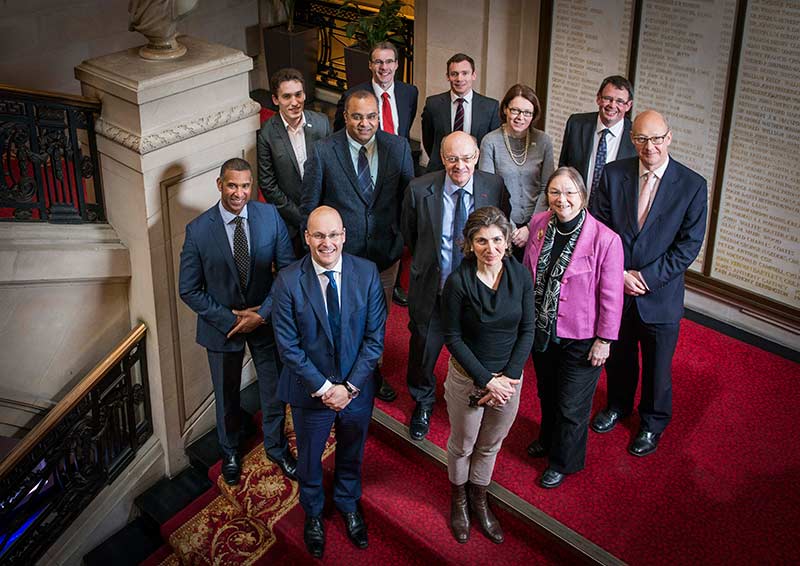Air Quality Taskforce
On 22 February 2016, new figures were released showing that poor air quality contributed to 40,000 early deaths across the UK. The news should come as a shock, but the issue is increasingly seen as an unavoidable cost, particularly of living in the capital with new worrying statistics on the cost of airborne pollutants released regularly.
Every year it takes only a few days for a number of central areas in London to breach the annual EU legal limits. Figures by Kings College London show that 52,000 life-years were lost due to man-made particulate matter in London. And the associated cost is astronomical – it’s estimated that issues relating to air pollution cost the economy £15 billion a year, similar to the cost of obesity or alcohol abuse.
The motor vehicle is the main culprit of London’s growing air pollution crisis, particularly those with diesel engines. Half of all nitrogen oxides, which cause respiratory problems and reduced immunity to lung infections, are caused by cars, with diesel engines producing four times as much as petrol vehicles. With traffic increasing on London’s roads, particularly HGVs, it seems harmful emissions quantities will continue to rise.
So far, air pollution is not an issue that the built environment has been particularly vocal on, but the way we shape and design our cities is directly linked to finding a solution to the issue. Whether it’s the better use of natural assets like rivers, the promotion of green infrastructure or better town planning, there are a number of ways the industry can make a difference.
With transport infrastructure, we must be sure that future schemes, which we design and build, are not contributing to the growing problem by adding to congestion. Plans to pedestrianise, create more cycle routes or increase road charges must be carefully considered to see how effective they can be in tackling poor air quality. Fundamentally, these are questions of what infrastructure we put in place to ensure that a growing city is not a polluting one.
Inside the industry, we must look at how our practices can be adapted. A significant amount of air pollution, such as particle matter emissions, comes from construction sites which, when close to residential areas, can pose serious health risks. Assessing how the industry can minimise and mitigate these risks is an essential way we can play our part, as is considering the use of new technologies and the changing habits and movements of the general public.
The new Air Quality Taskforce, established by ICE London, will look into all these issues. Its aim is to provide recommendations on what the built environment, and specifically civil engineers, can do to combat air pollution in the city.
The Taskforce brings together a number of civil engineering experts and environmental specialists and will provide a holistic approach to the issue, examining what must be done to make London a healthier place to live.
Members of the Taskforce:
- Chair: Peter Hansford, Former ICE President and Chief Construction Advisor
- Simon Birkett , Founder and Director, Clean Air in London
- James Bulleid, Group Work Winning Director, Costain
- Tony Caccavone, Programme Director, Heathrow
- Nigel Earnshaw, Asset Management Director, Black & Veatch
- Ralph Goldney, Managing Director, Goldney Associates
- Paul Gregory, Project Director, Sir Robert McAlpine
- Prashant Kumar, Reader, University of Surrey
- Francesca Medda, Director of Transport & Infrastructure Studies, UCL
- Suzanne Moroney, London Director, ICE
- Heleni Pantelidou, Associate Geotechnical Engineer, Arup
- Ken Simmonds, Divisional Director, Regional Investment Programme, Highways England
- Jean Venables, Director, Venables Consultancy
This article originally appeared as It’s time for the built environment to start thinking about air quality, published by the Institution of Civil Engineers on 29 February 2016. It was written by Peter Hansford, Former ICE President and Chief Construction Adviser.
--The Institution of Civil Engineers
[edit] Related articles on Designing Buildings Wiki:
- Air change rates.
- Air quality.
- BREEAM Indoor air quality plan.
- BREEAM Indoor air quality Ventilation.
- BREEAM Indoor pollutants VOCs.
- BSRIA responds to UK Air Pollution Report.
- Clean indoor air for healthy living - New air filter standards.
- Building related illness.
- Engineering Cleaner Air.
- Environmental impact assessment.
- Fresh air.
- Health effects of indoor air quality on children and young people.
- Indoor environmental quality.
- Institution of Civil Engineers.
Featured articles and news
Infrastructure that connect the physical and digital domains.
Harnessing robotics and AI in challenging environments
The key to nuclear decommissioning and fusion engineering.
BSRIA announces Lisa Ashworth as new CEO
Tasked with furthering BSRIA’s impressive growth ambitions.
Public buildings get half a million energy efficiency boost
£557 million to switch to cleaner heating and save on energy.
CIOB launches pre-election manifesto
Outlining potential future policies for the next government.
Grenfell Tower Inquiry announcement
Phase 2 hearings come to a close and the final report due in September.
Progress from Parts L, F and O: A whitepaper, one year on.
A replicated study to understand the opinion of practitioners.
ECA announces new president 2024
Electrical engineer and business leader Stuart Smith.
A distinct type of countryside that should be celebrated.
Should Part O be extended to existing buildings?
EAC brands heatwave adaptation a missed opportunity.
Definition of Statutory in workplace and facilities management
Established by IWFM, BESA, CIBSE and BSRIA.
Tackling the transition from traditional heating systems
59% lack the necessary information and confidence to switch.
The general election and the construction industry
As PM, Rishi Sunak announces July 4 date for an election.
Eco apprenticeships continue help grow green workforce
A year after being recognised at the King's coronation.
Permitted development rights for agricultural buildings
The changes coming into effect as of May 21, 2024.























